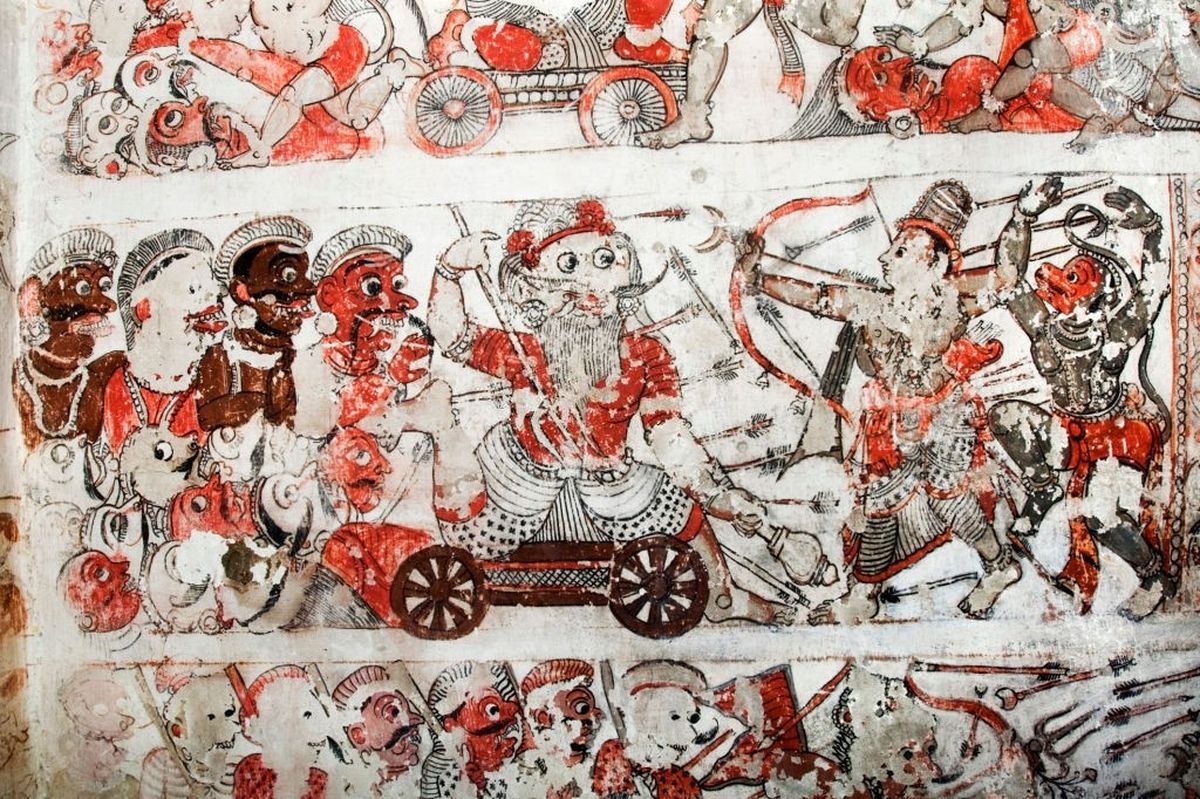You are reading the most detailed analysis of the historicity of Mahabharata where we analyze the evidence for Mahabharata as a historical, rather than a mythical narrative.
The Mahabharata is a revered Hindu epic with a deep association with Hinduism and a significant influence on modern Hindu cultural traditions. Many believe that the Mahabharata is a true historical account, while others see it as a myth.
There is an ongoing debate about whether the Mahabharata should be considered a historical record or a work of fiction.
Some proponents argue that it is a true account of history and point to published resources and alleged evidence of its historicity. However, these claims often lack historical evidence and may be biased.
On the other hand, skeptics and members of the scientific community often reject the idea that the Mahabharata is a historical record and classify it as mythology. However, they are unable to explain the enduring impact of the epic on modern Hindu society.
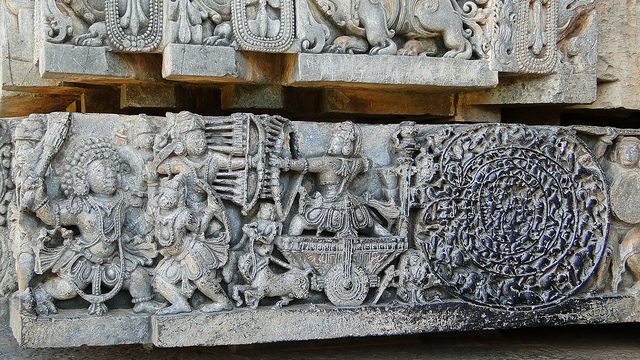
The study of Indian history based on available archaeological and scientific evidence has reached a clear conclusion. However, it is important to consider both sides of the argument and evaluate all available evidence using a modern, evidence-based approach.
Some may wonder how the shared memory of so many diverse cultures could be just a myth. Mythology is typically associated with a single culture or a small group of cultures, but the Mahabharata is revered by many.
This raises the question of whether the Mahabharata is a myth or a historical reality. To answer this question, it is necessary to examine the arguments and evidence presented by both proponents of history and proponents of mythology.
Clearly, the Mahabharata has a pervasive presence in Indian culture, suggesting that at least some aspects of the epic must be true in order to have such a profound impact on the shared memory of diverse societies.
You May Also Like: interesting facts about Mahabharata that you may not know about
Bhagvat Geeta and its Significance in Mahabharata
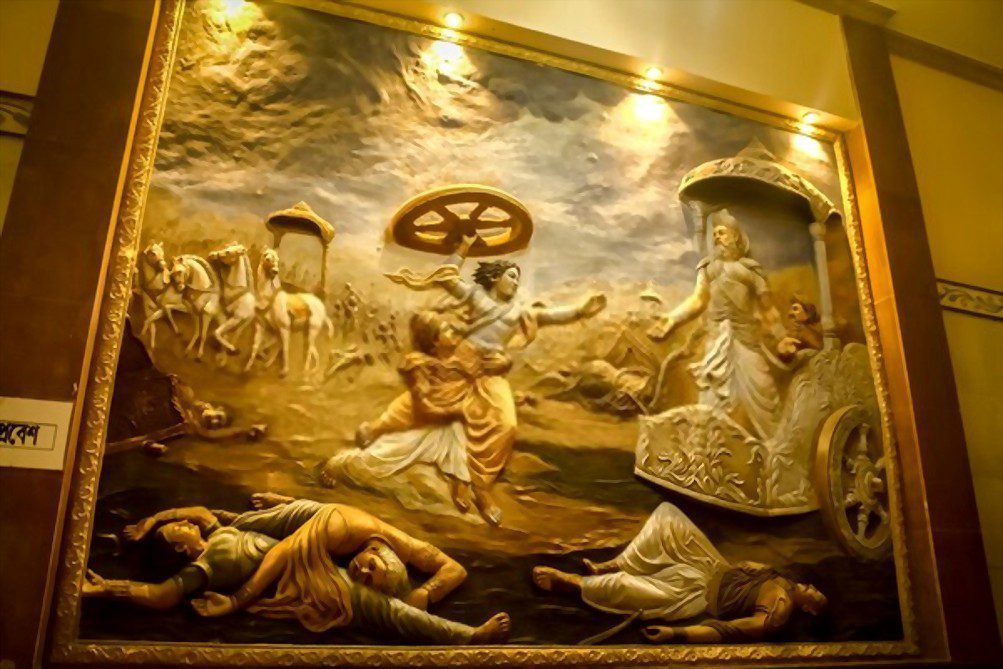
Bhagvat Geeta which is one of the most well-known and important holy books in Hinduism is a part of Mahabharata.
Bhagvat Geeta is said to be a documented narrative of the god Krishna to Arjuna to fulfill his moral obligation and fight in the war of Kurukshetra. It always further raises the question that if Mahabharata is not real then who wrote Geeta and what was the purpose?
We have tried to answer some of the questions by first analyzing what are the available pieces of evidence that suggest Mahabharata is real. I would rather call them arguments for claiming that Mahabharata is a true account of history.
I must acknowledge that some of them present strong reasoning and not merely faith-based arguments.
Let us now examine them. Let us observe the ‘Scientific proof of Mahabharata’
Facts proposed by those who support Mahabharata happened for real
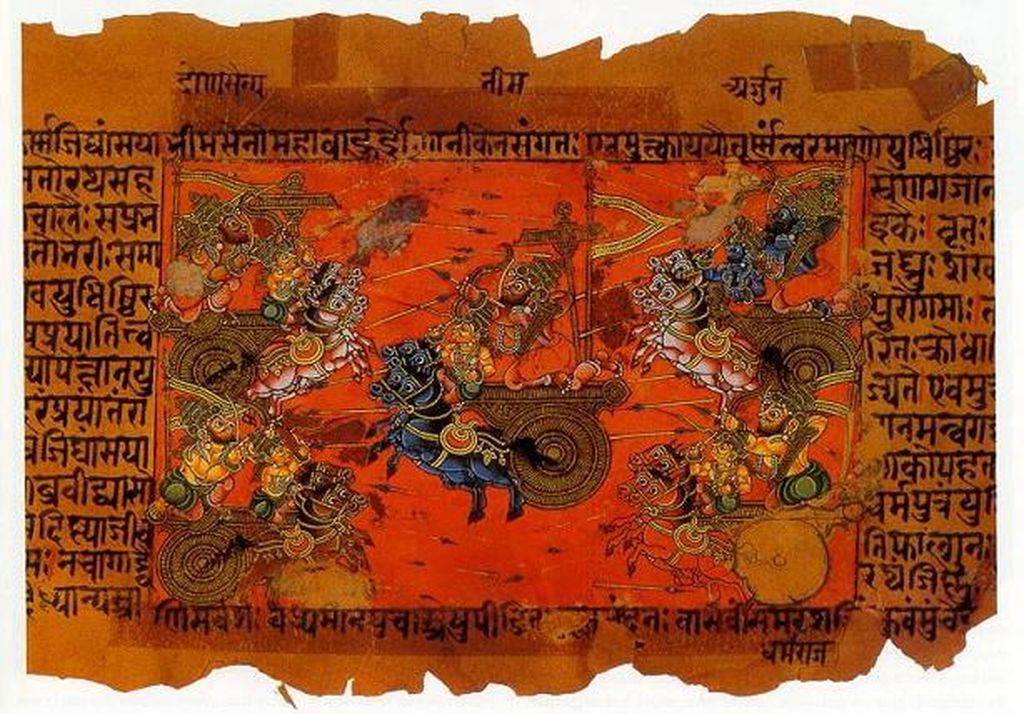
1. Records of Bharat dynasties and real historical lineage
According to the Aadiparva, the first book of the Mahabharata (Chapter 62), the Bharat dynasty and its lineage are recorded. The name “Bharat,” which is the Hindi name for India, is derived from this dynasty.
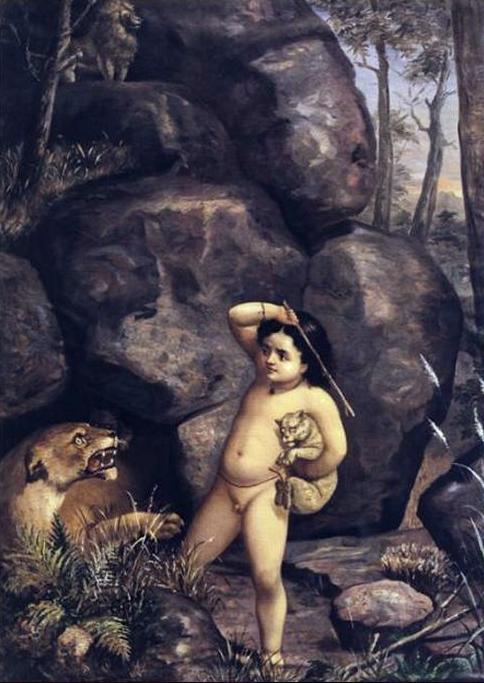
More than 50 kings and their dynasties starting from king Manu have been mentioned in detail. It seems unusual for a fictional tale to use so many kings and their lineage when just 5-6 kings would be enough for any functional construct.
2. It is written as Itihas (History)
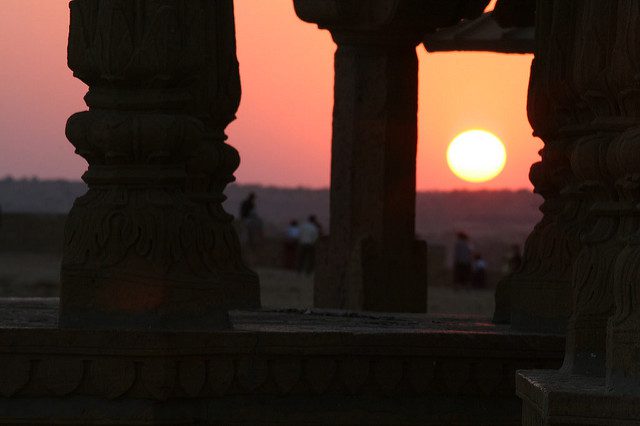
In Mahabharata, the author clearly claims that it is an “Itihas’ (Sanskrit word for History). The words “Puraan” and “Itihas” were explicitly coined by the ancient people to categorize the “ancient” and “recent” events. Both words denote history that has occurred at different times.
Proponents of those who support the Mahabharata account and Kurukshetra war are historical events claim that If the intention of the writer was to write a poem or a work of fiction, he would have stated it to be a “Mahakavya” (epic) or “Katha” (story) which was a tradition at that time.
3. Description of the modern world in ancient times
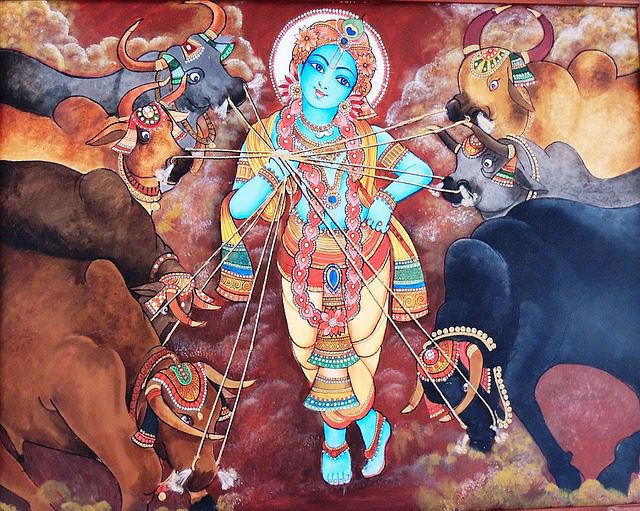
If you get a chance to read the description of Kaliyuga as mentioned in Mahabharata. Whatever Krishna predicted about future civilization in Kalyug (Modern Times) came true, but please note that these were not prophecies but are part of Geeta.
And remember – this was written thousands of years ago! Fiction? many say that it’s likely because there are way too many corroborations and tallying circumstances for it to be fiction.
4. Archaeological evidence of the lost city of Dwarka
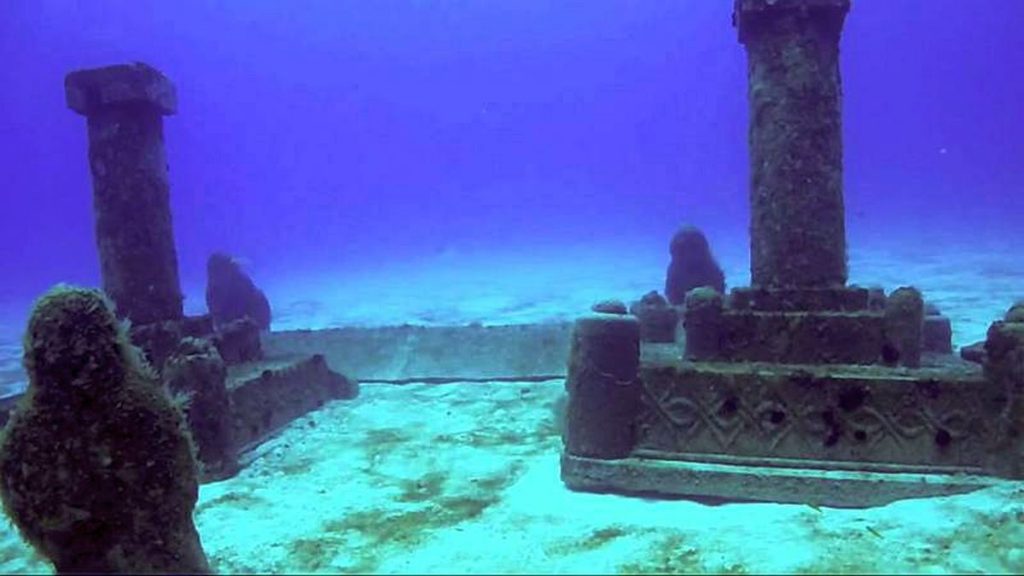
Marine archaeologists while exploring the ancient submerged city of Dwaraka in Gujarat, uncovered further evidence in support of statements in the Vedic scriptures.
An entire submerged city at Dwaraka, the ancient port city of Lord Krishna with its massive fort walls, piers, wharves and jetty has been found in the ocean as described in the Mahabharata and other Vedic literature.
Please note that these are claims made by those who support Mahabharata as a historical narrative.
5. Real places mentioned in Mahabharata and archaeological evidence
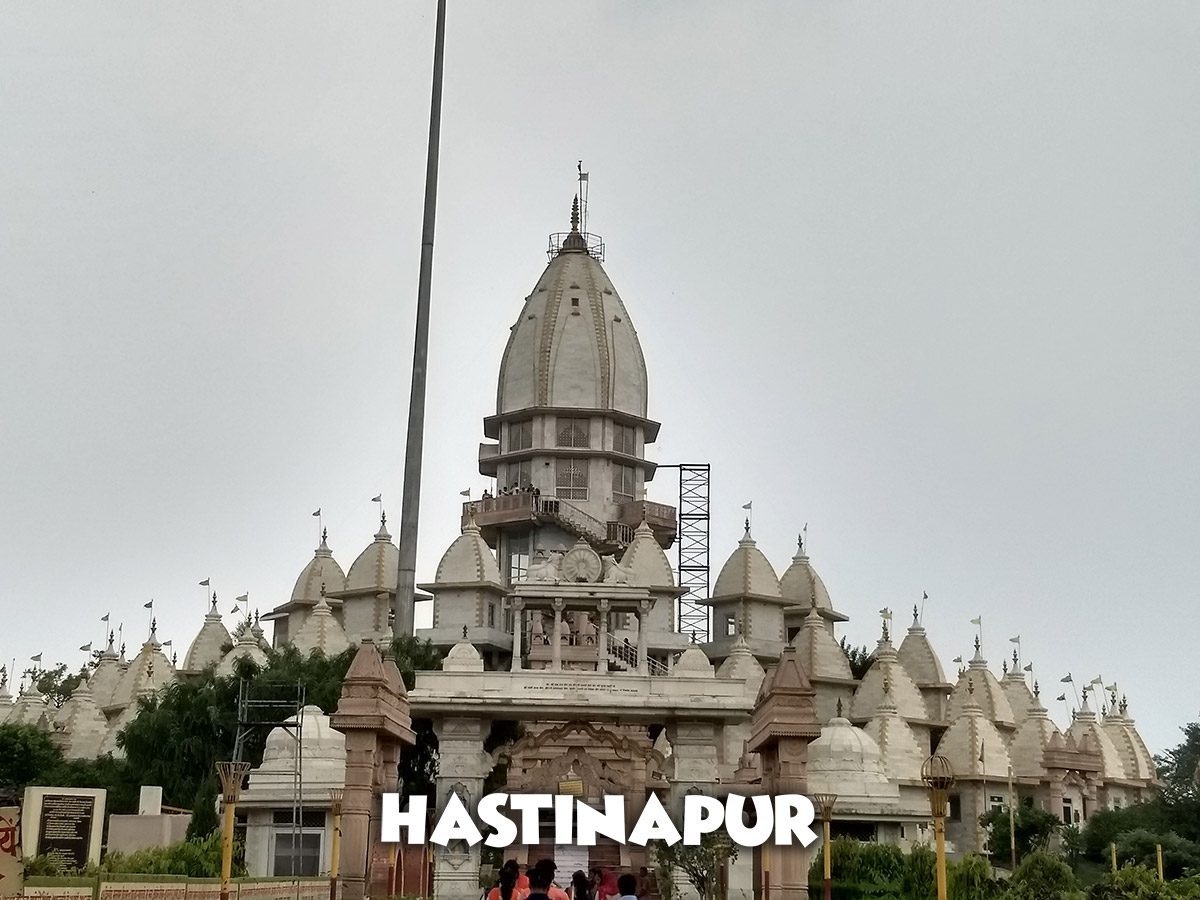
More than thirty-five sites in North India have yielded archaeological evidence and have been identified as ancient cities described in the Mahabharata.
Copper utensils, iron, seals, gold & silver ornaments, terracotta discs, and painted grey ware pottery have all been found in these sites. Scientific dating of these artifacts corresponds to the non-Aryan-invasion model of Indian antiquity.
All places mentioned in Mahabharata are real places, all are identified and still exist with the same name. For instance, Hastinapur is in UP with multiple pieces of evidence of Mahabharata in Hastinapur.
Indraprastha is present-day Delhi. Dwarka is located on the Gujarat coast. Kurukshetra where the war actually happened is in present-day Haryana near Delhi.
Interestingly this is not limited to only India. The Kekaya kingdom is located in today’s Pakistan, the Madra Kingdom is located in today’s Pakistan. The Gandhara Kingdom is located in today’s Afghanistan. The Kambojas Kingdom is located in today’s Iran. The Parama Kamboja Kingdom is located in today’s Tajikistan.
Recently researchers have found the city of Dwarka under the sea in the said place. Mahabharata cities are not limited to present-day India because Mahabharata referred to the Indian subcontinent as Bharat.
6. Progression from Ramayana
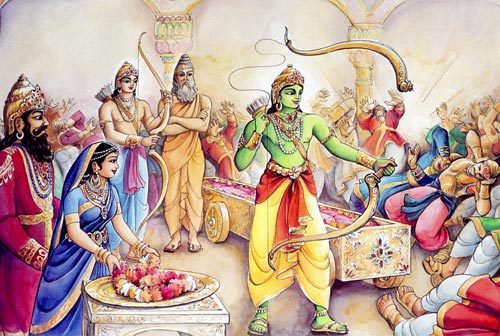
Mahabharata is a continuation of the dynasties from Ramayana and it has a well-established coherence in the chain of events. Even the relations between different kings and their dynasties in both the great “epics” match with each other.
If both were mere “epics” written by two entirely different persons, at two different points in time, why would everything match even minute details? Mahabharata occurs thousand of years after Ramayana. What is the need for the author of the Mahabharata to borrow the same ideas and characters as those of the author of Ramayana?
Read: 6000-year-old Rama and Hanuman carving found in Mesopotamia
7. Astronomical references
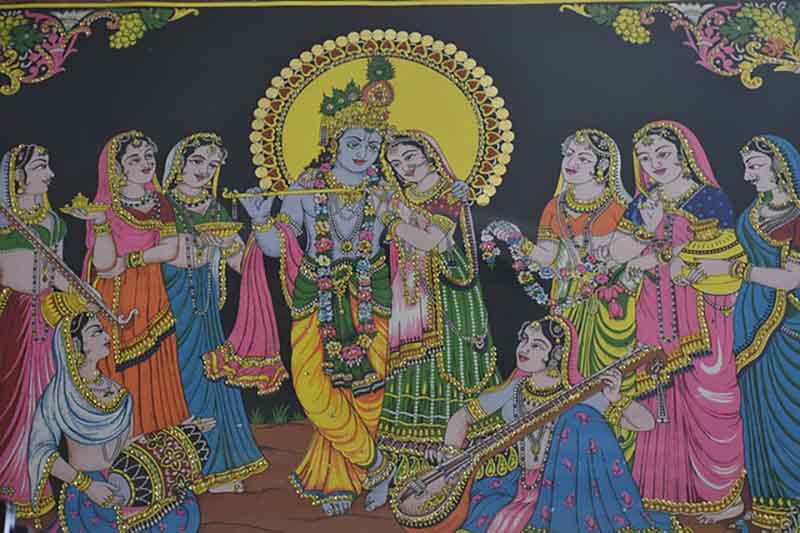
The Udyoga Parva of Mahabharata narrates that, just before the War, Lord Krishna went to Hastinapur in the month of Kartika on the day when the moon was at the asterism Revati.
On His way to Hastinapur, Krishna took a rest for a day at a place called Brikasthala, and on that day the moon was at the asterism Bharani.
On the day on which Duryodhana turned down all the efforts of Krishna and made the war inevitable, the moon was resting at the asterism Pushya.
8. The myth of Aryan invasion theory
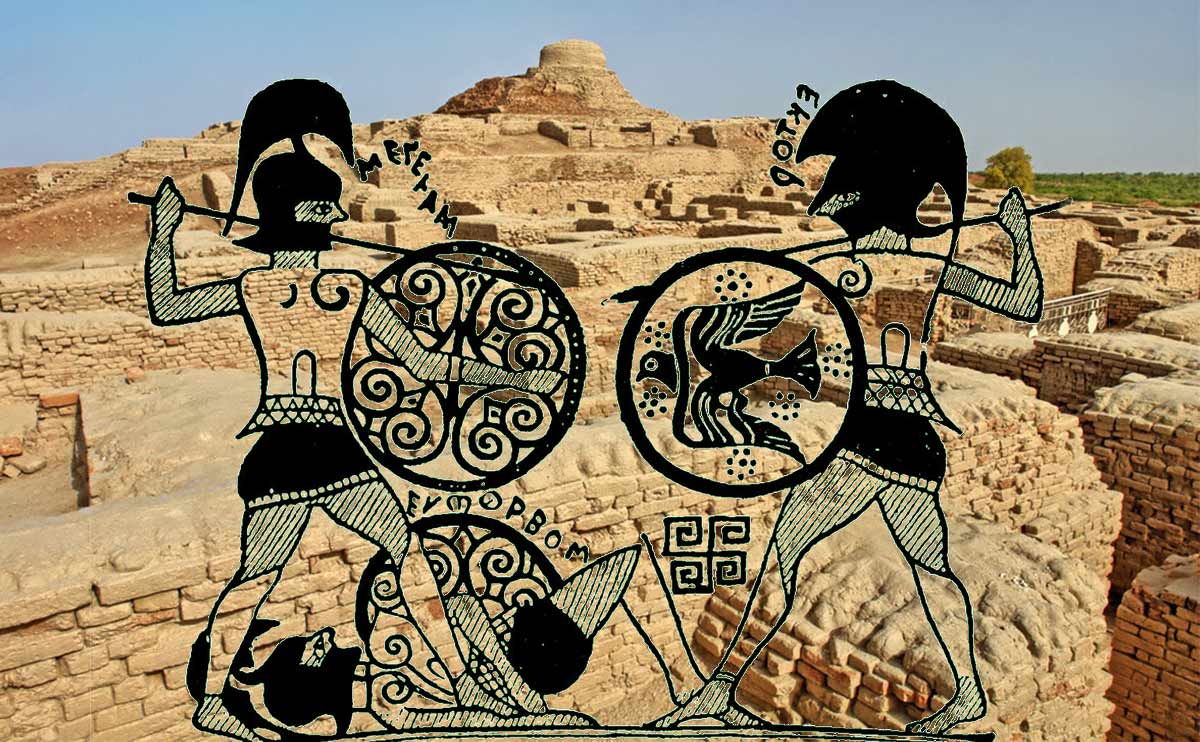
European scholars brought the nomadic Aryan tribes, into India after 1500 BC. How could these Aryans create the Sanskrit language, gain so much knowledge and write all these texts before 700 BC?
Great Indian thinkers including Lokmanya Tilak, Sri Aurobindo, and Dayanand Sarasvati rejected the European theory.
9. Historical references that proved to be correct
Maurya, Gupta, and Indo-Greek dynasties are also recorded in the Puranas. These dynasties are accepted only because they are also recorded by Greek historians.
What about the dynasties that existed before the Greek historians?
10. Famous Oppenheimer quote
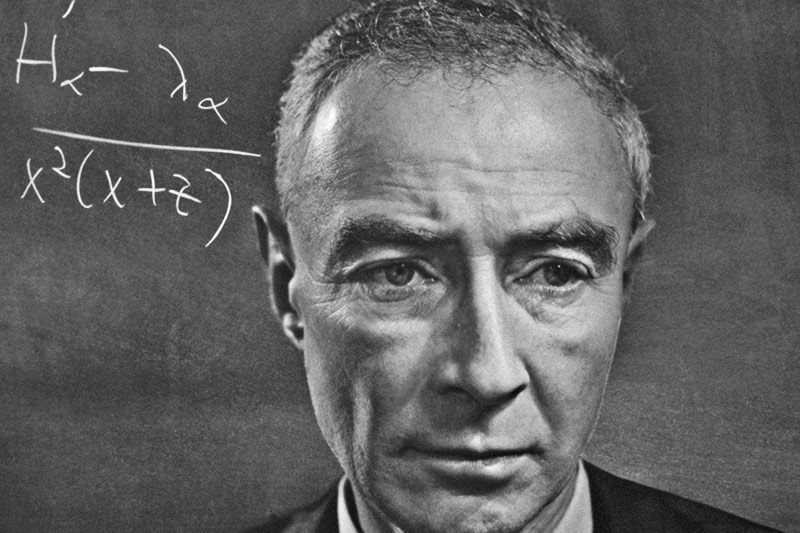
The architect of the modern atomic bomb who was in charge of the Manhattan Project was asked by a student after the Manhattan explosion, “How do you feel after having exploded the first atomic bomb on earth”.
Oppenheimer’s reply to the question was, “not the first atomic bomb, but the first atomic bomb in modern times”. He strongly believed that nukes were used in ancient India.
As he witnessed the first detonation of a nuclear weapon on July 16, 1945, a piece of Hindu scripture ran through the mind of Robert Oppenheimer: “Now I am become Death, the destroyer of worlds”.
It is, perhaps, the most well-known line from the Bhagavad-Gita, but also the most misunderstood.
11. Flying vehicles and nuclear war
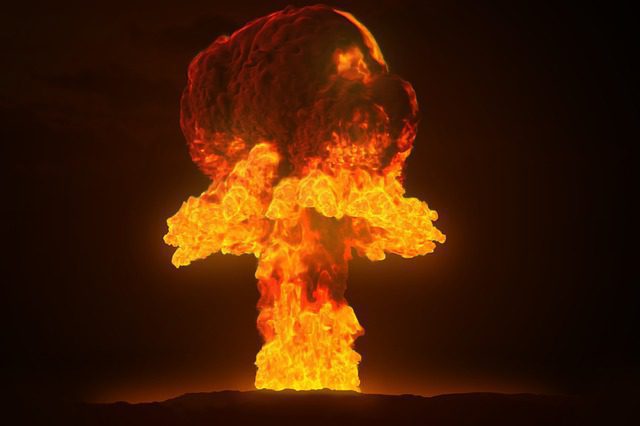
The Indian Epics, especially the MAHABHARATA, pick up the thread of the tale of devastation and destruction. Sanskrit scholars could not understand what was being described in the Epics until the dropping of the first atomic bombs on Japan happened. The effects of radiation poisoning also became clear.
Now, these details have been provided with details in Mahabharata. Details provided in Mahabharata can be roughly translated into English below:
Flying a swift and powerful Vimana (Aircraft) hurled a single projectile Charged with all the power of the Universe. An incandescent column of smoke and flame as bright as ten thousand Suns rose in all its splendor….it was an unknown weapon, an iron thunderbolt, a gigantic messenger of death, Which reduced to ashes.
The Entire race of the Vrishnis and the Andhakas….the corpses were so burned as to be unrecognizable. Their hair and nails fell out, pottery broke without apparent cause and the birds turned white. After a few hours, all foodstuffs were infected. To escape from this fire, the soldiers threw themselves in streams to wash themselves and their equipment
12. Real places with evidence that correlates with Mahabharata

One of the good examples is a place, a few kilometers from Gwalior, Morena (M.P.), India, where the mother of Pandavas the heroes of Mahabharata, Kunti invoked the Mantra given by Maharishi Durvasa and summoned Surya Bhagwan (Sun God) who appeared on a seven horsed chariot.
The dazzling heat of the chariot and the horses melted the rock, leaving imprints on the rock.
13. The enormity of details provided
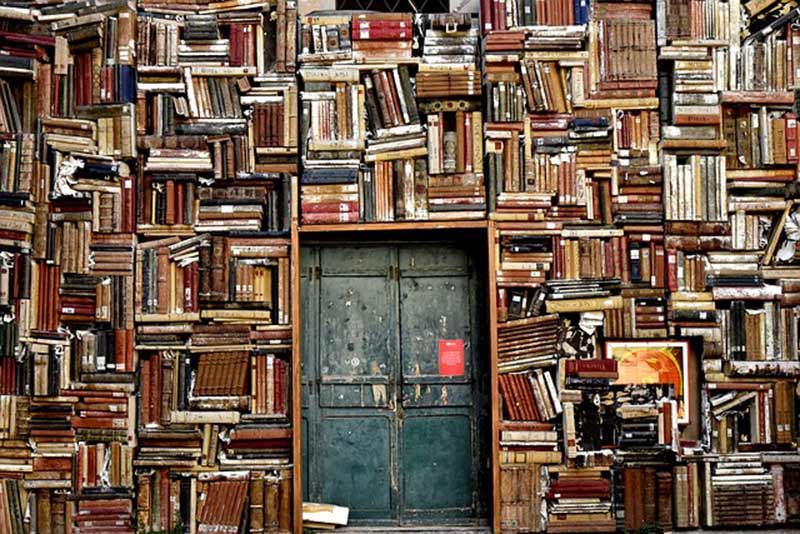
The Mahabharata is the longest-known epic poem and has been described as “the longest poem ever written”. Its longest version consists of over 100,000 shlokas or over 200,000 individual verse lines (each shloka is a couplet), and long prose passages. About 1.8 million words in total, the Mahabharata is roughly ten times the length of the Iliad and the Odyssey combined. (Source: Wikipedia)
In today’s world of smartphones and computers, it may seem easy to maintain coherence with a large amount of data. Consider this in ancient times, when there was no Ctrl+F to search through enormous documents, maintain consistency and infer stories and cite references.
14. Physics and advanced science in Mahabharata
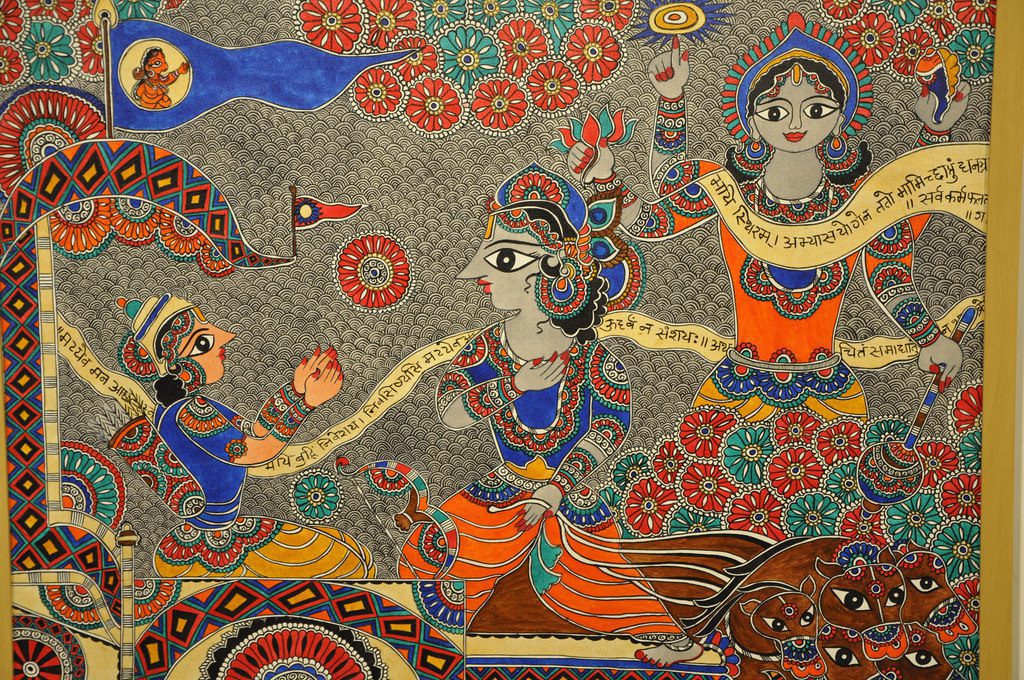
Proponents of Mahabharata narrating a historical event also claimed that whether it’s time travel, quantum mechanics, or gravity all find some mention in Mahabharata. Some prominent political figures in India even claimed that test-tube babies originated during those times.
Further, one of the very first-time travel stories recorded in history appears in the Mahabharata. The story follows a king, his daughter, and their search for a perfect suitor.
Revati was the only daughter of King Kakudmi, a powerful monarch who ruled Kusasthali, a prosperous and advanced kingdom under the sea.
Thinking no one could prove to be good enough to marry his beautiful daughter, Kakudmi took Revati with him to Brahmaloka, the home of Brahma, to ask god’s advice about finding a suitable husband for her.
Brahma was listening to a musical performance when they arrived, and so they waited patiently until the performance was finished. Finally, King Kakudmi humbly bowed and made his request:
“O Brahmâ! To whom shall I betroth this daughter? I have come to you to ask on this point I have searched for many princes and seen also a good many of them and none of them is to my liking and so my mind is not at rest.”
Brahma laughed at the foolishness of the King.
“O, King! The princes that you thought would become the bridegroom of your daughter, all died; their sons and grandsons and their friends even have all passed away.”
Time, as God Brahma goes on to explain, runs differently on different planes of existence. During the time they had waited in Brahmaloka to see him, 27 Chatur-Yugas, had passed on Earth.
Everything that Kakudmi had and owned, his friends and family, his sons and wife, his armies and treasures, had vanished with the time that had passed.
The King and his daughter were overcome with astonishment and grief for everything they had lost, but Brahma comforted them and recommended a worthy husband currently on earth: Balarama, the twin brother of Krishna.
I know, this is as close as it gets to explaining the relative nature of time or time travel to make it simple. This feature in our post on Hinduism and Science analysis.
15. Radioactivity
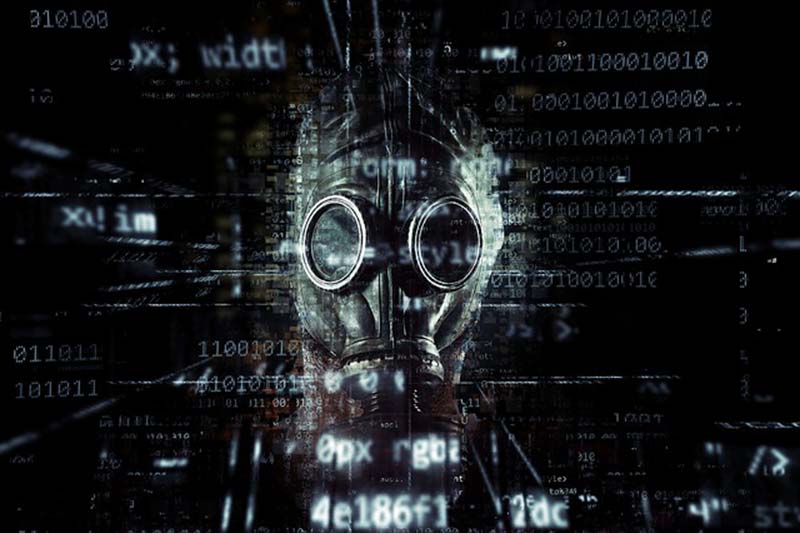
There are many claims of radioactivity like in Jodhpur which is at least 710 Km distant from the war of Kurukshetra.
Radioactivity has been quoted as one of the scientific arguments presenting evidence at different places in India including a giant unexplained crater near Bombay.
Now, these are very strong arguments for Mahabharata to be real history. We examined each of the points and the facts are presented below
Facts that do not support Mahabharata really happened and show its fictional nature
1. The Enormous scale of destruction is not possible
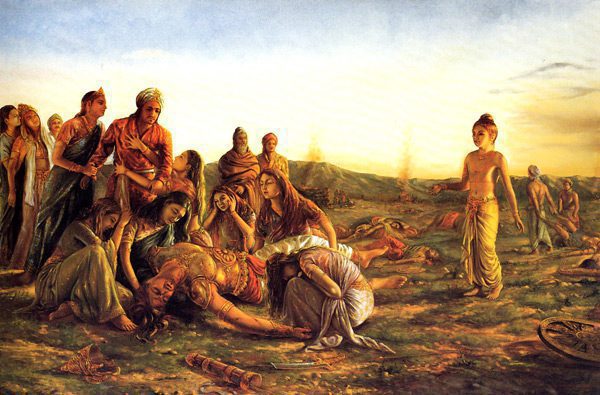
Four million dead during the war of Kurukshetra is documented in Mahabharata. While scientific studies estimate the world population to be around 115 million in 1000 BC.
If Mahabharata has to be validated as history it has to have occurred before 4000 BC, remember we have good historical records from 5000 BC onward. The world population estimate at that time is about 7 to 28 million in the whole world.
In addition, the fact that only 12 people survived the war. Out of 4 million only 18 people surviving is in itself a miracle, add to that the facts that the righteous (Pandavas) were all surviving, and rest 4 were the Kauravas or the not-so-righteous opponent.
The strength of the armies mentioned in Mahabharata can be found below:
| Pandava (the righteous brothers) | Kauravas (the opponent) |
|---|---|
| 7 Akshauhinis 153,090 chariots and chariot-riders 153,090 elephants and elephant-riders 459,270 horses and horse-riders 765,450 infantry (total 1,530,900 soldiers) | 11 Akshauhinis 240,570 chariots and chariot-riders 240,570 elephants and elephant-riders 721,710 horses and horse-riders 1,202,850 infantry (total 2,405,700 soldiers) |
Akshauhinis is described in the Mahabharata as a battle formation consisting of 21,870 chariots (Sanskrit Ratha); 21,870 elephants; 65,610 horses and 109,350 infantry.
2. Astronomical references are cyclic in nature
Have you heard about the number of years it will take to see a similar lunar eclipse? How do they estimate that?
It is because astronomical data is cyclic in nature and repeats itself every thousand if not hundreds of years. This has real implications for the calculation of the timeline which can be seen below in various astronomy-based predictions for the date of Mahabharata
- P. V. Vartak calculates a date of 16 October 5561 BCE using planetary positions.
- P. V. Holey states a date of 13 November 3143 BCE using planetary positions and calendar systems.
- Aihole inscriptions give the date of the Kurukshetra war around 3102 BCE.
- K. Sadananda, based on translation work, states that the Kurukshetra War started on 22 November 3067 BCE.
- B. N. Achar used planetarium software to argue that the Mahabharata War took place in 3067 BCE.
- S. Balakrishna concluded a date of 2559 BCE using consecutive lunar eclipses.
- R. N. Iyengar concluded a date of 1478 BCE using double eclipses and Saturn+Jupiter conjunctions.
- P. R. Sarkar estimates a date of 1298 BCE for the war of Kurukshetra.
- V. S. Dubey claims that the war happened near 950 BCE.
If one event has so many different predictions for a date with a range that exceeds 4500 years, it’s almost certain that they didn’t have good references for dating the events. The astronomical dating premise is surely ruled out.
A very important point while discussing the timeline of Mahabharata that needs to be considered is the problem of iron.
The Iron Age in India is established to have started around 1500 BCE or later. In Mahabharata, there are multiple mentions and the use of iron weapons. This puts Mahabharata to be a relatively recent development.
3. The Aryan theory is not ruled out by historians.
Vedas including Rig Veda and Puranas themselves have elaborate details about Aryan migration to India. The Rigveda contains accounts of conflicts between the Aryas and the Dasas and Dasyus.
It describes Dasas and Dasyus as people who do not perform sacrifices (Akratu) or obey the commandments of gods (Avrata). While many Indians believe that Aryan migration in India has been a western theory that was manipulated to suit their colonial ambitions, there is a strong basis for Aryan migration theory.
4. Ancient Nuclear war theory is disapproved
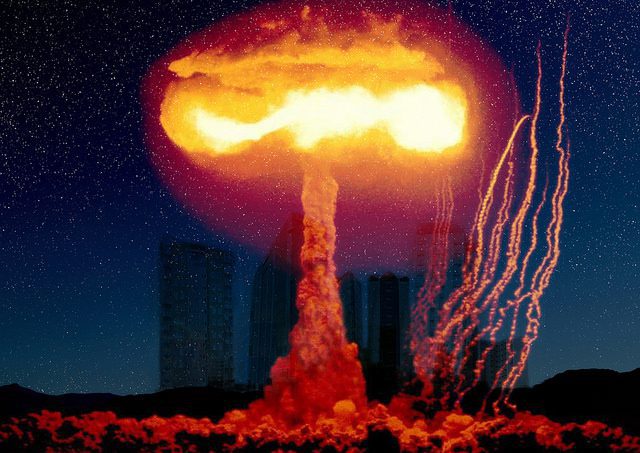
Before I get into the details we must understand why people keep referencing that an ancient atomic bomb was indeed used in Mahabharata, (including our friends from Ancient Aliens series) in the form of a weapon called Bramhastra’ The exact translated version of the text is given below.
Vaishampayana said: “When the thirty-sixth year (after the battle) was reached, the delighter of the Kurus, Yudhishthira, beheld many unusual portents. Winds, dry and strong, and showering gravels, blew from every side.
Birds began to wheel, making circles from right to left. The great rivers ran in opposite directions. The horizon on every side seemed to be always covered with fog. Meteors, showering (blazing) coals, fell on the Earth from the sky.
A single projectile charged with all the power in the Universe… An incandescent column of smoke and flame as bright as 10,000 suns, rose in all its splendor… It was an unknown weapon, an iron thunderbolt, a gigantic messenger of death which reduced to ashes an entire race.
The corpses were so burned as to be unrecognizable. Their hair and nails fell out, pottery broke without any apparent cause, and the birds turned white.
After a few hours, all foodstuffs were infected. To escape from this fire, the soldiers threw themselves into the river.
The Sun’s disc, O king, seemed to be always covered with dust. At its rise, the great luminary of day was shorn of splendour and seemed to be crossed by headless trunks (of human beings). Fierce circles of light were seen every day around both the Sun and the Moon. These circles showed three hues…
There seems to be an eerie reference to the atomic bomb explosion and radioactivity. Right? But there is nothing remotely like this story in any archaeological publications.
Archaeological information about the excavations of Mohenjo-Daro, Harappa, and other Indus Valley sites is widely available online and in print, and there is simply no such thing as radioactive skeletons or skeletons in large numbers or holding hands or sprawled in any way that the archaeologists saw reason to print.
Furthermore, the vast majority of radioactive isotopes produced in a nuclear blast have extremely short half-lives measured in seconds, hours, or days, and are reduced to safe levels very quickly.
Those that pose the greatest threat to human health are Cesium-137 and Strontium-90, which have half-lives of 30 and 28 years, and so even these would have been reduced to well below the natural background levels thousands of years ago.
Other long-lived isotopes are produced by nuclear explosions but at much lower amounts.
Note that despite the atomic destruction of Hiroshima and Nagasaki, no harmful radiation persists today in either city. Put together all the radiation data, and we know for a fact, with no doubt, that any claims of modern radiation in India proving a prehistoric nuclear war are false. So we have good reason to regard the entire story with great skepticism.
So how about this giant unexplained crater near Bombay? Lonar Crater — which is some 775 kilometers southeast of Jodhpur, even farther away — is indeed a real crater. Rim to rim it measures about 1.8 km. It is blasted out of thick layers of volcanic basalt, deposited over the plateau 66 million years ago. If the crater was indeed formed by a nuclear blast 8-12,000 years ago, dating techniques should make this easy to determine.
For a long time, the accepted age of Lonar Crater was 52,000 years; far too old to have been part of this alleged nuclear war. This had been determined by thermoluminescence dating, which tells us when the sample was last molten.
But two newer measurements, using argon-argon radiometric dating instead, found older dates of 570,000 years and 656,000 years, with non-overlapping margins of error.
Reference Dunning, B. “Defusing India’s Ancient Atomic Blasts.” Skeptoid Podcast. Skeptoid Media, 18 Oct 2016.
5. The submerged part of Dwarka is a post-Mauryan site
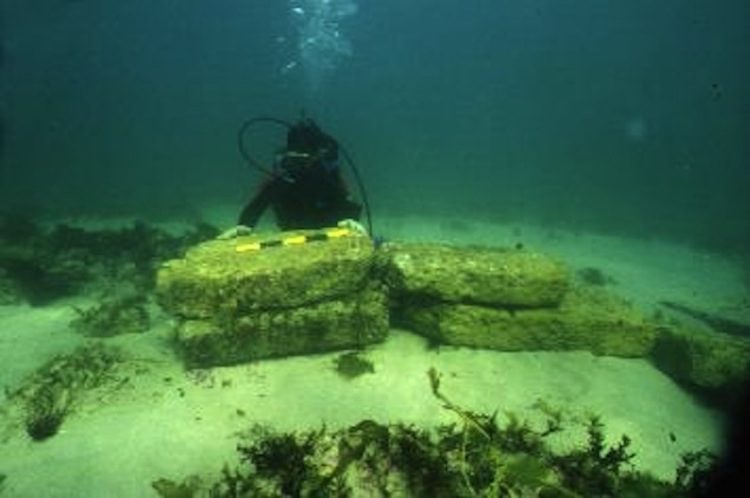
The comparative study of surrounding sites indicates that the date of the structures of Dwarka may be between the Historical period and the late medieval period. You can further read about ‘Is underwater Dwarka the city of Krishna mentioned in the Mahabharata.’
The article reviews the earlier hypothesis about the identification and dating of these structures in light of new evidence from recent underwater explorations.
It is very difficult to say the findings are from ancient age and do not meet the criteria as per Lord Krishna’s Dwarka narration and as per Purana and other ancient texts.
According to ancient Sanskrit literature, Lord Krishna founded the holy city of Dwarka, which subsequently got submerged undersea.
Marine archaeological explorations off Dwarka have brought to light a large number of stone structures, which are semicircular, rectangular, and square in shape in water depth ranging from the intertidal zone to 6 m.
They are randomly scattered over a vast area. Besides these structures, a large number of varieties of stone anchors have been noticed along with the structures as well as beyond 6 m water depth
It nowhere corroborates with the ancient Dwarka city narrative.
You May Also Like: Is Ram Setu a Man-Made Structure and Proof that Ramayana is Real History?
6. Fictional stories with real settings are common
With all due respect to the epic, there are multiple instances of fictional stories using real settings, places, and people.
These are easy examples to understand. A Few of them that I can mention here is Marvel comics Character ‘ Captain America’ and we all know about Harry Potter, right?
7. Fictional stories do sometimes predict technologies not yet available to them
The Cable Guy (1996) In this film starring Jim Carrey as a disturbed cable guy who tries to make friends there is a scene that predicted the future with creepy accuracy. Jim’s character screams in the rain how every American will have a mix of cable TV, computer, and phone all in one. He even says you will play Mortal Kombat with a friend in Vietnam, predicting online gaming and Google TV at the same time
2001: A Space Odyssey (1968) Many consider it the greatest space movie ever made. The Oscar-winning masterpiece by Stanley Kubrick has turned out to be the cinematic equivalent of Nostradamus since it predicted not one or two things about the future but several, including tablet computing, the International Space Station, space tourism, and Siri—yes HAL, we’re talking about you. (One of the most fascinating movie villains of modern cinema is this evil voice-controlled computer in 2001: A Space Odyssey.)
WarGames (1983) This awesome eighties film gave us a young, fresh-looking Matthew Broderick. Well, this silly, low-budget flick predicted hacking and cyber warfare during a time when the Internet as we know it, didn’t even exist. Quite impressive if you think about it– Matthew Broderick was the first hacker in pop culture, no?
8. Archaeology and evidence about the Mahabharata do not correlate
Archaeological explorations and excavations at various places which are mentioned in the Mahabharata like Hastinapura, Kurukshetra, Panipat, Tilpat, Baghpat, Mathura, and Bairat, have given evidence of pottery called Painted Grey Ware, which goes back to c. 1000 BCE.
This shows that these sites were inhabited around this time, and the nature of the remains suggests that the people who lived here shared a pastoral and agricultural living.
There is another sort of evidence from Hastinapura — The Matsya and Vayu Puranas state that during the reign of king Nichakshu (fifth king in the Puranas.
There is a strong local tradition that the Purana Qila in New Delhi marks the place where Indraprastha, the capital of the Pandavas, once stood.
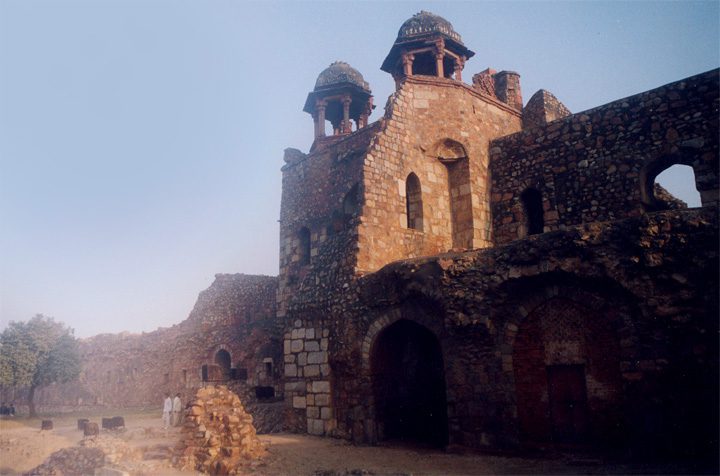
Shams Siraj Afif’s Tarikh-i-Firuz Shahi (14th century) states that Indraprastha was the headquarters of a Pargana (district).
A 14th-century stone inscription found in Naraina village in west Delhi also mentions Indraprastha.
The 16th-century Ain-i-Akbari of Abul Fazl states that Humayun’s fort was built at the place where Indraprastha, the capital of the Pandavas, was located long ago.
In fact, till the end of the 19th century, there was a village called Indarpat inside the fort walls.
Excavations carried out at the Purana Qila between 1954 and 1971 revealed several archaeological levels ranging from the 4th century BCE to the 19th century CE.
The discovery of a few stray pieces of PGW indicated the possibility that an older settlement was located somewhere nearby. However, there is no way of knowing for sure whether this settlement had any connection with the Mahabharata.
9. Problem with the timeline of when the Mahabharata events and Kurukshetra War happened
The single most challenge that anyone who wants to prove that Mahabharata and the war mentioned as Kurukshetra War happened, will be to establish when did it actually happen?
A simple run through the Timeline of Indian History will show why it is so difficult to place the Kurukshetra war and events in Mahabharata on this timeline.
First, it is very clearly established that the first civilized humans in the Indian subcontinent belonged to Mehrgarh (7000 BCE and 5500 BCE) a Neolithic site, which lies on the Kacchi Plain of Balochistan, Pakistan.
This was followed by Indus Valley Civilization (lasting from 3300 BCE to 1300 BCE, and in its mature form from 2600 BCE to 1900 BCE). The Vedic Period which is established to predate Ramayana and Mahabharata (As per the epics) was overlapping with the late Indus Valley Civilization and Aryan migration to India.
Aryans were the people who were said to speak an archaic Indo-European language and who were thought to have settled in prehistoric times in ancient Iran and the northern Indian subcontinent.
This puts the dates of Mahabharata to be a narrative of events after 1500 BCE. However, non of the Vedas have any mention of Mahabharata which is natural as the epic itself mentions Vedas as the ultimate source of knowledge.
This pushes down the dates further and almost coincides with the ancient history of India around 500 BCE or later (Near the end of the Late Vedic Period) and coincides with the Magadh Kingdom.
This region of Greater Magadha had a culture and belief system of its own that predated Hinduism. Much of the second urbanization took place here from c. 500 BCE onwards and it was here that Jainism became strong and Buddhism arose. We have independent sources from that time from Greeks to Babylon, that nowhere mentions a great war as mentioned in Mahabharata.
Considering that even Sumerians had trade contacts with much older Indus Valley Civilization, and there is wide documentation and archaeological evidence from that time, a lack of any reference to war as great as what’s mentioned in the epic is unexplained and supports the fictional nature of the epic.
10. The enormity of the details provided, a long chain of lineage and physics
I must acknowledge that I couldn’t come up with any evidence that provides a clear explanation answer as to how it was done. All we can say is that it is a brilliant epic with unprecedented creativity and literary skills.
But we have precedence where we did not know how the pyramids of Egypt were built and it looked quite impossible for ancient people to have created a structure of that proportion. Now we fully understand how ingenious our ancestors were and how they built them.
However, a modern good example can be A Song of Ice and Fire a series of epic fantasy novels by the American novelist and screenwriter George R. R. Martin.
Many of us have seen or at least know about the TV series The Game of Thrones and The House of Dragon, which is based on Martins’s work. Needless to say that we are aware of its fictional nature.
The enormity of the detail and family tree of various houses, especially the Targaryen — is very detailed, though not as much as in the Epic Mahabharata.
It doesn’t further the argument of the historical nature of Mahabharata.
What’s the conclusion, is Mahabharata fact or fiction, Did Mahabharata really happen?
We are trying to verify the truth of the narrative here, not the setting itself. The way to verify a narrative will be to:
- Remove any poetic license, hyperbole, and religious faith here.
- Seek credible independent sources which document the narrative with evidence
- Find archaeological evidence, artifacts, and documentation that can be clearly traced back to the events of the narrative.
We don’t have very strong evidence for Mahabharata as of today on the given parameters. Our evidence available to date establishes:
- It is an iron age narrative
- It was set in a universe that has no bearing on scientific reality as we know it – magic and demigods were an integral part of the narrative with various supernatural (believed to be at present) powers and events.
- The authors, redactors, and the re-tellers of the epics may have changed the original story, clearly demonstrating that they were aware of the fictional nature of these stories; refer to Jain and Buddhist texts which have competing narratives.
- The usual things provided as evidence have mostly been falsified
- The Indus Valley civilization was strictly Bronze Age and had nothing to do with the epics
- The Gulf of Khambhat has been officially dismissed by the Govt. of India, their funding revoked and research erased
- The submerged part of Dwarka was a post-Mauryan site
- In fact, all geographical locations associated with the epics are strictly post-Buddha and largely Puranic
So is Mahabharata real, did Mahabharata really happen as we know it today? We have presented positive evidence that points to the fact that it is a work of fiction inspired by real incidents and perhaps real people.
However, the narrative is full of fantasies with no evidence to confirm the facts and therefore not “real”.
As it is often said “Extraordinary claims require extraordinary evidence”
Without a shred of doubt, Mahabharata is one of the greatest epics known to humans, but the entire narrative cannot be said to be real, based on the available evidence.
